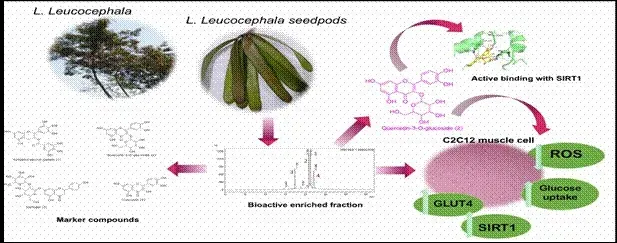The Medicinal Plant Subabul May Contribute to Diabetes Management: IASST Research

New Delhi, Dec 4 (NationPress) Research conducted by the Institute of Advanced Study in Science and Technology (IASST) in Guwahati indicates that the traditional medicinal plant Subabul may be beneficial in managing insulin resistance related to type 2 diabetes. Subabul, scientifically known as Leucaena leucocephala (Lam.) de Wit, is a rapidly growing leguminous tree prevalent in tropical and subtropical regions.
The leaves and immature seeds of this plant can be consumed in various forms, including soups and salads, whether raw or cooked. This plant serves as a substantial source of protein and fiber. Historically, different ethnic communities have incorporated it into their diets for both humans and animals.
The research team investigated the therapeutic efficacy of the seedpods from Subabul in addressing insulin resistance, a condition wherein the body's cells fail to respond appropriately to insulin, potentially leading to diabetes.
Subsequently, they formulated a bio-activity-guided fraction and identified four active compounds by selecting the most potent fraction after evaluating all fractions for their bioactivity.
The bioactive fraction exhibited improved insulin sensitization in free fatty acid-induced skeletal muscle cells (C2C12).
Moreover, the isolated active compound quercetin-3-glucoside demonstrated the upregulation of the mitochondrial deacetylase enzyme Sirtuin 1 (SIRT1), which is crucial in regulating insulin sensitivity alongside the enhanced translocation of GLUT2,” stated the research team. GLUT2 is a protein responsible for facilitating the movement of glucose and fructose across cell membranes.
The findings also indicated stable interactions between quercetin-3-glucoside and the SIRT1 residue through the formation of hydrogen bonds.
Published in the journal ACS Omega, the research “demonstrated the therapeutic potential of this plant in enhancing glucose uptake, corroborating the ethnobotanical claims regarding its use for diabetes and related disorders,” the researchers concluded.







